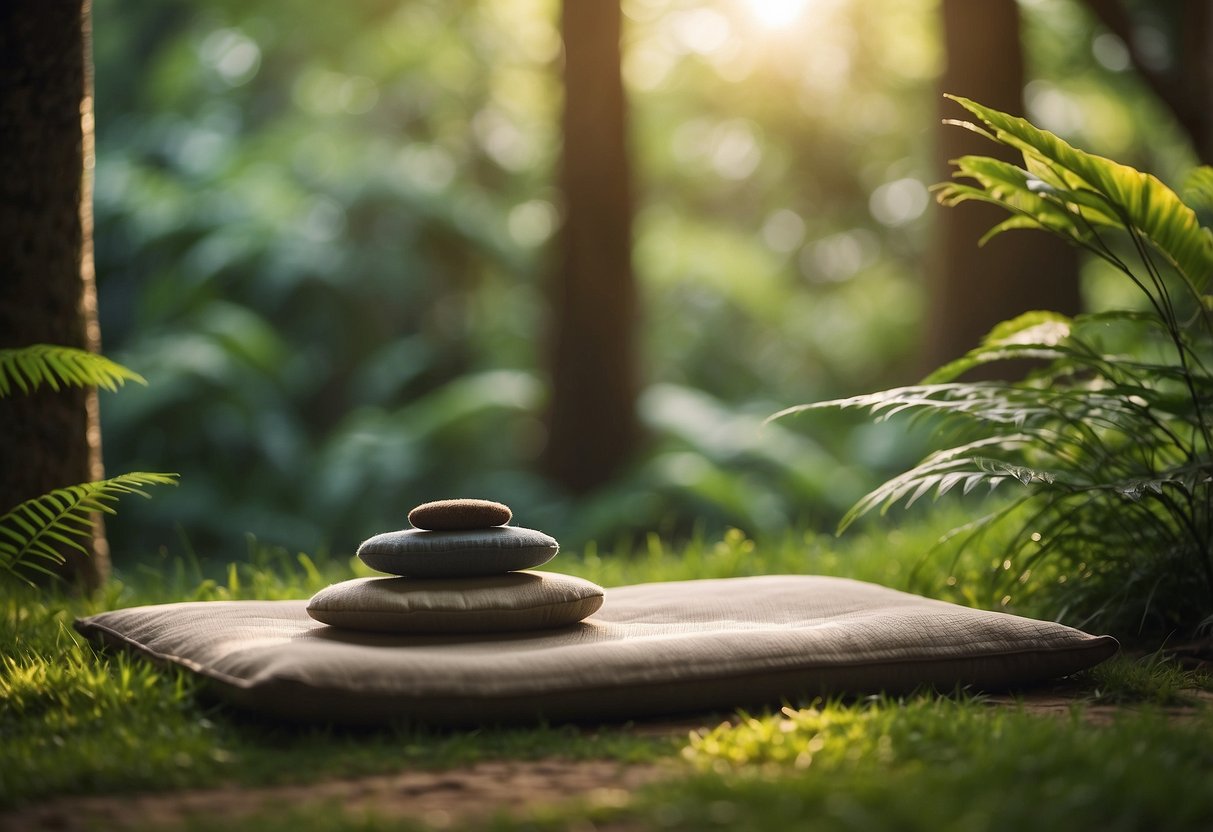The Power of Meditation: A Beginner’s Guide to Long-Term Practice
Minimizing Distractions
Creating an environment free from interruptions helps maintain focus during meditation. Selecting a quiet space where noise and visual stimuli are minimal can significantly reduce distractions. Turning off devices or notifying others about the need for undisturbed time can further reduce interruptions.
Soft or calming background sounds, like gentle music or nature sounds, may help some individuals concentrate better. The choice of using background sound should align with the goal of minimizing competing stimuli.
Breath awareness can also anchor the mind and prevent drift. Establishing a routine, such as meditating at the same time each day in the same place, can create a familiar and calming environment, fostering consistency in practice.
Starting Your Meditation Practice
Establishing a meditation practice involves focusing on the breath and attention, and setting realistic time frames to cultivate a consistent habit. Guided techniques and setting achievable goals can significantly enhance your meditation journey.
The Role of Breath and Attention
Focusing on the breath serves as a foundational aspect of meditation. Attention to each inhale and exhale helps anchor the mind, reducing distractions and promoting a state of calm. Beginners often find it helpful to count breaths or use guided recordings to maintain focus.
Attention is equally crucial. It involves gently bringing the mind back to the breath whenever it wanders. This process cultivates mindfulness and improves concentration. Over time, consistent practice strengthens the ability to remain present and attentive, even outside meditation sessions.
Setting Realistic Time Frames
Setting achievable time frames is vital for maintaining a meditation practice. Starting with just a few minutes each day can prevent feelings of overwhelm. Gradually increasing the duration helps to build a sustainable habit without causing stress or frustration.
Creating a specific schedule encourages consistency. Whether it’s a morning routine or a quiet evening ritual, dedicating a regular time slot enhances commitment. It’s important to remain flexible, adjusting the practice as needed to fit daily life and personal growth.
Integrating Meditation into Your Routine

Integrating meditation into daily life involves creating a structured schedule and weaving mindfulness into everyday activities, enhancing overall well-being and productivity.
Creating a Consistent Schedule
Establishing a meditation habit begins with setting a regular schedule. Consistency is key as it helps in forming a routine that becomes second nature. Pick a specific time each day, ideally when distractions are minimal, such as early morning or before bedtime. Use this time exclusively for meditation, allowing the mind to associate this period with calmness and focus.
Start with short sessions, perhaps 5-10 minutes, gradually increasing the duration as comfort grows. This gradual increase prevents feelings of overwhelm and aids in maintaining the habit. Utilizing reminders, like phone alarms or calendar events, ensures one sticks to the practice, reinforcing consistency. Over time, these sessions fit seamlessly into daily life, fostering a habit that enhances mental clarity and emotional balance.
Incorporating Mindfulness into Daily Activities
Mindfulness isn’t limited to sitting in silence. Integrating mindfulness into routine tasks enhances presence and focus. Begin with simple activities like mindful eating, where attention is entirely on the food – its taste, texture, and aroma. This practice can make meals more enjoyable and satisfying.
Mindful walking is another valuable method. Focus on each step, the sensation of the ground underfoot, and the rhythm of movement. Even routine chores, like washing dishes, can become opportunities for mindfulness by concentrating on the sensation of water and the act itself.
By infusing daily activities with mindfulness, one can enhance productivity and presence. This seamless integration ensures that meditation’s benefits extend beyond designated sessions, nurturing a calm, focused, and balanced state throughout the day.



